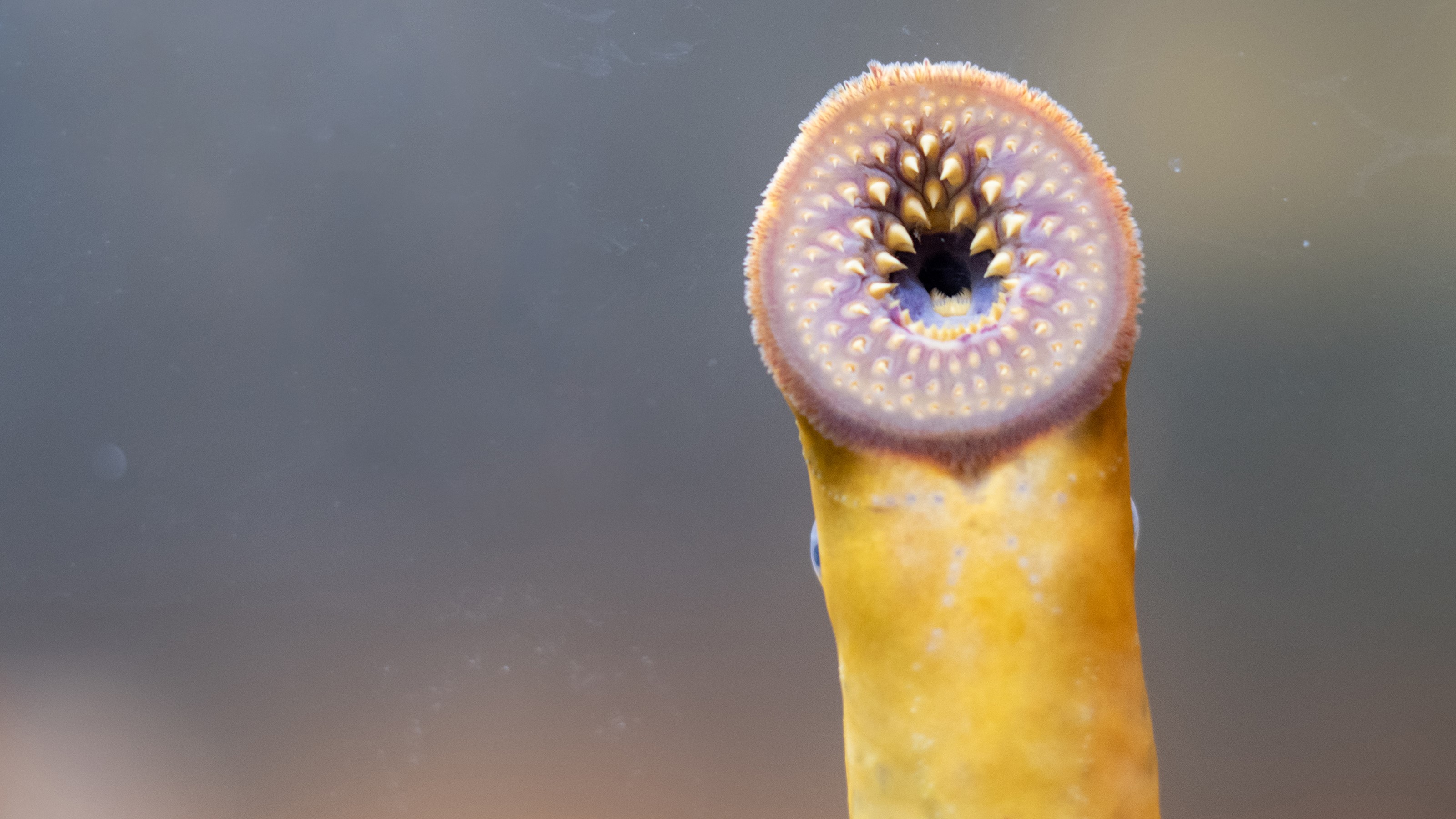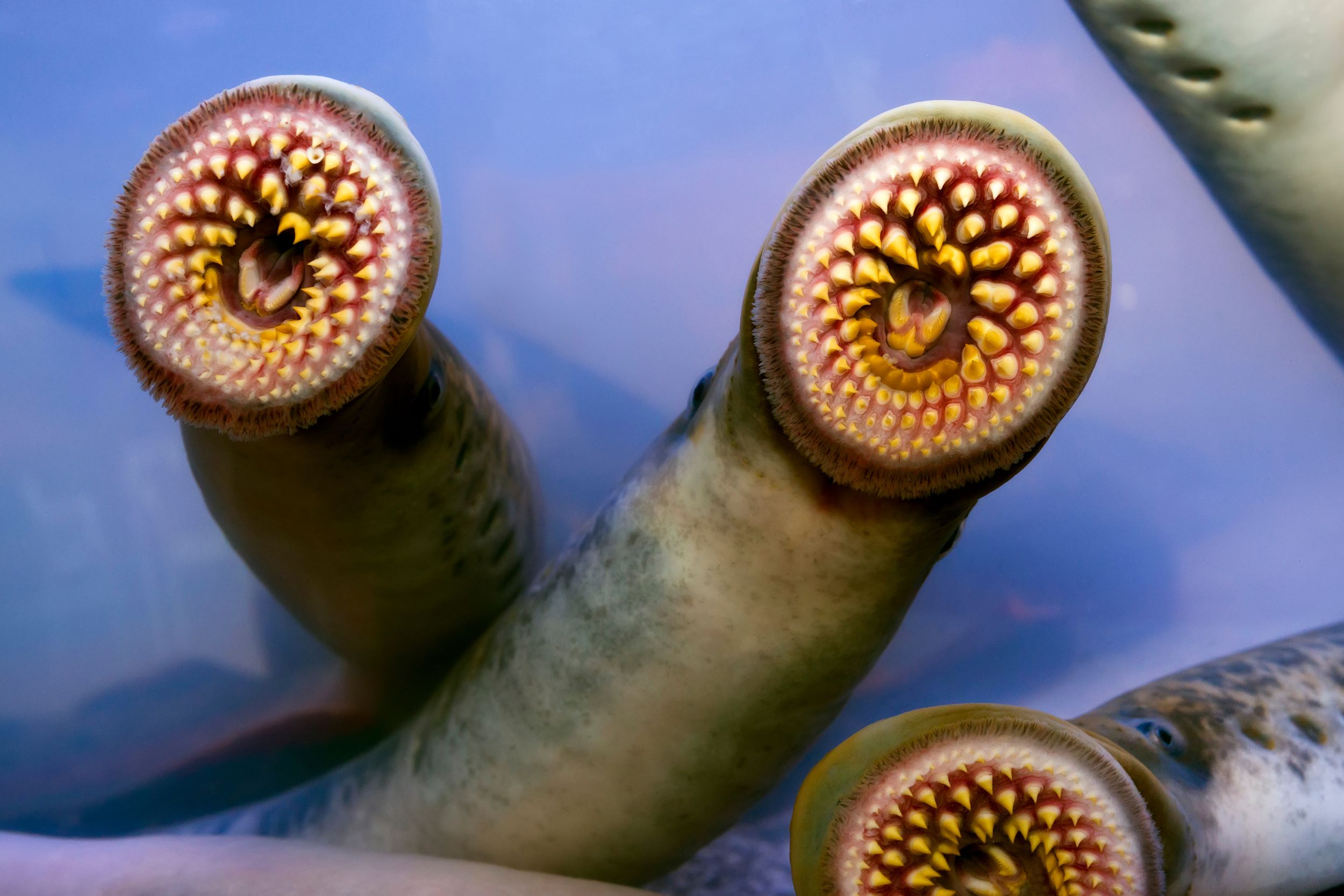Human origins tied to ancient jawless blood-sucking fish
Researchers have traced cell origins critical to vertebrate evolution by studying a group of primitive, bloodsucking fish called lampreys.

Jawless, bloodsucking fish could help us understand how humans and all other vertebrates evolved, scientists say.
Turns out, lampreys — notable for their lack of jaw and generally terrifying appearance — have a cell population that was key to the origins of vertebrates, according to a new study, published July 26 in the journal Nature Ecology and Evolution.
Vertebrates, including humans, trace their lineage back to ancient fish that lived more than 400 million years ago during the Devonian period (419 million to 359 million years ago). At that time, jawless fish filled the seas, while jawed vertebrates were uncommon. Today, the opposite is true.
Lampreys and hagfish are the only surviving groups of the once-dominant jawless vertebrates. They are among the most primitive living vertebrates, so studying their genes can help researchers better understand early vertebrate evolution.
"Lampreys may hold the key to understanding where we came from," study author Carole LaBonne, a professor of molecular biosciences at Northwestern University in Illinois, said in a statement. "In evolutionary biology, if you want to understand where a feature came from, you can't look forward to more complex vertebrates that have been evolving independently for 500 million years. You need to look backwards to whatever the most primitive version of the type of animal you're studying is, which leads us back to hagfish and lampreys — the last living examples of jawless vertebrates."
Related: Nightmare fish may explain how our 'fight or flight' response evolved
LaBonne and her colleagues compared lamprey genes with a group of jawed, aquatic frogs called Xenopus. They specifically looked at genes regulating a stem cell population called the neural crest, which is only found in vertebrates and helped drive vertebrate evolution, according to the study.
Sign up for the Live Science daily newsletter now
Get the world’s most fascinating discoveries delivered straight to your inbox.
"These stem cells are central to the vertebrate body plan as they contribute diverse cell types, tissues, and structures that were essential to the origin and diversification of vertebrates," the researchers wrote in the study.
The team found a similar gene network in both animals — except for one major difference. A stem cell-regulating gene called pou5 was not expressed in the neural crest cells of lampreys, which may have limited the ability of those cells to create the head and jaw, according to the statement. This potentially explains why lampreys are jawless.

The researchers also looked at pluripotent blastula cells, which are more primitive cells that the team believe are linked to the evolution of the neural crest. These cell types can also potentially become all other cell types in the body, known as pluripotency, so they are important for determining body plans.
The scientists found that lampreys and Xenopus had a completely intact pluripotency network within their blastula cells, implying blastula and neural crest stem cells evolved at the beginning of the vertebrate family tree.
The researchers hypothesized that pou5, which was in both lamprey and Xenopus blastula cells, was present when the ancestor of jawed and jawless vertebrates first evolved, and it was later lost from the neural crest of jawless vertebrates.
"While most of the genes controlling pluripotency are expressed in the lamprey neural crest, the expression of one of these key genes — pou5 — was lost from these cells," first author Joshua York, a researcher in the molecular biosciences department at Northwestern University, said in the statement. "Amazingly, even though pou5 isn’t expressed in a lamprey’s neural crest, it could promote neural crest formation when we expressed it in frogs, suggesting this gene is part of an ancient pluripotency network that was present in our earliest vertebrate ancestors."

Patrick Pester is the trending news writer at Live Science. His work has appeared on other science websites, such as BBC Science Focus and Scientific American. Patrick retrained as a journalist after spending his early career working in zoos and wildlife conservation. He was awarded the Master's Excellence Scholarship to study at Cardiff University where he completed a master's degree in international journalism. He also has a second master's degree in biodiversity, evolution and conservation in action from Middlesex University London. When he isn't writing news, Patrick investigates the sale of human remains.









